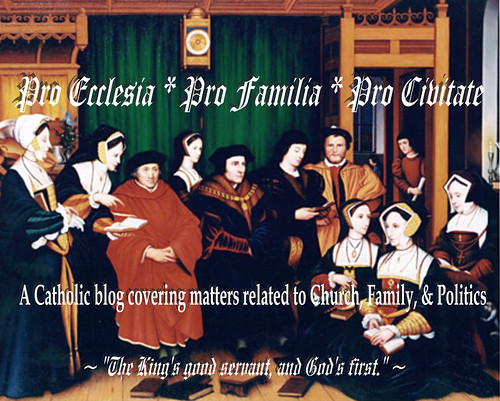First Things on "The Transformation of Belfast"

Sandra Czelusniak, an M.A. student at Queen’s University Belfast and a 2007 Publius Fellow with the Claremont Institute, writes on the changing face of Belfast and Northern Ireland at the First Things blog:
... The first word that comes to mind on visiting Belfast in 2008, ten years after the signing of the Good Friday Agreement that brokered a cease-fire between the various paramilitary groups and brought an end to the thirty-year period of sectarian violence commonly known as “The Troubles,” is change. In July 2007, the British Army officially announced the termination of its Northern Ireland mission and withdrew its troops from the region, with this news coming on the heels of a landmark power-sharing agreement between the Republican Sinn Féin and Loyalist Democratic Unionist party. This year, the omnipresent Reverend Ian Paisley, notorious for his longtime refusal even to so much as shake hands with a Catholic, is stepping down as the head of the Democratic Unionist party, bringing an end to a long chapter in the history of religious and political tension in Northern Ireland. This announcement came after Paisley’s having formed a political friendship with Martin McGuiness, head of the Northern Ireland Parliament’s Sinn Féin delegation. This odd pairing has given the duo the nickname “Chuckle Brothers” for their apparent propensity for laughing and smiling together in public.(emphasis added)
***
But as eye-opening as the politically charged murals are, a deeper understanding of the Northern Ireland conflict comes from talking with the inhabitants of Belfast themselves, who know firsthand the complexities and realities of living in a such a politically charged atmosphere. One of the most surprising aspects of the Troubles was, for an outsider such as myself, the range and spectrum of experience and opinion found in both “communities.” These ranged from the young woman from Falls Road whose parents sent her to live with a family in Belgium every summer, to the Republican-sympathizing Protestants from just outside Belfast, to the students who lived in rural areas and to whom the nationalist-loyalist connotations of either Catholic or Protestant affiliation were as bewildering to them as they were to the non-Irish among us.
Hence my surprise upon hearing from a Protestant student that the Catholics were identifiable based on their last names, their pronunciation of certain words, if they said “Derry” instead of “Londonderry,” enthusiasm for the Irish language, or even what type of football jerseys they would wear. After listening to that explanation, one could almost be forgiven for thinking that being Catholic meant attending Mass and professing submission to the authority of the pope. It would be unimaginable in some parts of Belfast that a loyal British subject could be Catholic, or that an ethnically Celtic Irishman could be a Protestant, so inseparable were the political and religious affiliations. But this is indicative of how insular the two groups had become due to centuries of mutual hostility and myriad injustices towards the indigenous Catholic population of Ireland.
It is this very conflation of “Catholic-Republican” and “Protestant-Loyalist” identities that leads some Catholics in Belfast to regard Sinn Féin and Republicanism with disdain. “I tell Catholics not to vote for Sinn Féin. It’s basically a Marxist-socialist party, and their positions are very often against the Catholic Church,” the Catholic chaplain at Queen’s University told me. “I came from a very rural, very Catholic though not Republican small town where we were not terribly affected by what was going on in Belfast.”
These Catholics, though they certainly have no love lost for the Unionists, saw much of the violence in the Troubles as arising partly from the tendency of many Northern Irish Catholics to submerge their Catholic identity into the ideology of Irish Republicanism. This is illustrated in a perplexing mural on the Falls Road commemorating Irish participation in the (very anti-Catholic) Republican army during the Spanish Civil War.
Several others were likewise very quick to impress upon me that Catholic and Republican were not the same thing. When I expressed my surprise at having seen pictures of Che Guevara lumped in with those of Bobby Sands at a Republican pub, a lifelong Catholic Belfast resident answered: “Simplistic, isn’t it? Anyone who presents themselves as ‘freedom fighters’ will get these people’s praise.” He went on to tell me: “Yes, there was discrimination. Yes, things were difficult for many Catholics for a long time. But the Sinn Féin was always more concerned for their Marxist agenda than for Catholics and their families. I would sooner vote Unionist than any of these people. And my father was in the IRA, so that is saying a lot.”
[More]
My Comments:
I've always had Irish Republican sympathies (even back when I was a Protestant), but I've also always recognized that Sinn Fein are a bunch of unreconstructed Marxists.
Below is a sampling of the sorts of republican murals discussed in the First Things piece. Not a whole lot to do with Irish independence in these things. And, for the record, the unionist murals are worse - nothing but a violent hodgepodge of threats and Orange chest-thumping intimidation.



Labels: Anti-Catholicism, Communists, History, Ireland, Religious Persecution, United Kingdom



0 Comments:
Post a Comment
<< Home